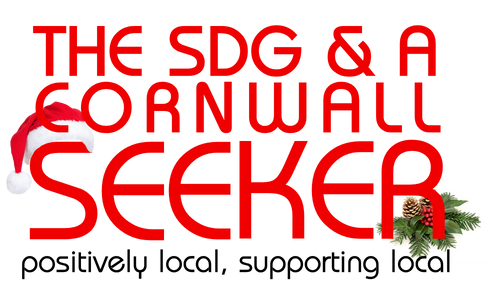It’s Only Words
I doubt that my mother was the only parent who recited these words numerous times during my childhood, “Sticks and stones may break my bones but words will never hurt me’. Often used following a hurtful episode on the school playground or even in my own back yard from the neighbours, the phrase was meant to sooth my hurt feelings, calm my embarrassment or protect me from bullying. Although her intentions were sincere, her words had little effect. As a sensitive child, I was still wounded. The words from the lips of others were more slicing and dicing than the stick might have been, leaving me more than bruised, deeply hurt. Bullying was common in my era as well. The damage was done, unseen by human eyes, carried forward over the years, often included in part of the self-critic’s voice as an adult. And so it is. All of us endure these experiences in some form.
And here we are now, adults, knowing how damaging words can be and understanding the impact of thoughtless phrases, and even as we understand this, we remain unmindful when it comes to the choices we use in conversations or the harm we may also be creating. So is it time for all of us to begin to thoughtfully approach conversations and be more mindful in how we communicate.
Since 2020, our post COVID era, tolerance has declined, understanding has diminished, and judgment of others has reached an all-time high. It is disheartening to see how quickly people make assumptions about others without ever asking a question, without seeking to understand why someone feels the way they do, and without wondering what might be happening in another person’s life that leads to certain responses or behaviours. I suggest we all need to come up for air, take a deep breath, slow down and be just a little compassionate.
So let’s talk about the importance of words and how we might be able to approach conversations differently, how we might build bridges versus putting up road blocks. How we might be able to use our words to give people a leg up versus trampling them into the ground.
Let’s begin to listen more, ask questions and say less. And when we do speak, let’s tune into our vocabulary, our presentation style, our tone of voice and our body language. It is time to mindfully approach communication as a significant tool for creating healthy relationships and building community.
Where do you begin?
Ban the BUT
Here is a brief exercise for you to try. In your next conversation, whether with yourself or another person, tune into the number of times you use the word BUT. BUT is a road block. When another person expresses an idea and you ‘BUT’ them, you are making them wrong, potentially shutting them down.
Replace BUT with AND. And is a building block.
Andy says: I think that this would be a good approach for the next project.
You say: I thought so too BUT I think we should continue taking the same approach we always have.
OR
You say: I thought so too AND taking the same approach, we have been taking, is also valid.
Same message, different approach. When you engage BUT, Andy feels dismissed. When you use AND, Andy feels heard.
The same is true of our self-talk. Truthfully, if you listen in you will notice that you BUT yourself a lot. Consider this, “ I would love to buy that dress on sale, BUT I need to lose weight. I want to begin a job search for a new position BUT I don’t have enough experience. I want to try out for that role in the play BUT I am not good enough.” And on it goes. Sound familiar? Imagine replacing all those BUTs with ANDs:
“ I would love to buy that dress on sale, AND I am going to try it on. I want to begin a job search for a new position AND that way I will gain experience. I want to try out for that role in the play AND give it a shot.”
You can see that AND opens up possibilities whereas BUT shuts things down.
An extension is that is to also ban ‘either/or’ thinking, the idea that there is always a choice to be made between one thing or another. The possibility always exists that there is merit in two different ideas suggesting that you consider a ‘both/and’ approach to life.
Finally, you do not always have to agree or reach agreement. It is okay to agree to disagree and simply respect another person’s opinion as being different from yours.
Two Eyes, Two Ears, One Mouth
Back to my mother. She always told me “You have Two Eyes, Two Ears, and One Mouth for a reason, use them proportionately.” This of course was good advice. Sometimes people speak to hear themselves and think out loud, certainly if you are on the extroverted side of the equation. Unfortunately, this shuts down the more introverted types as all the airspace is consumed. As a result, some opinions go unheard and thoughts unshared.
A suggestion I used to share with my more extroverted clients was WAIT, and acronym for Why Am I Talking? Engaging WAIT is a strategy to help you pause and reflect on whether you are speaking just to be heard, if you are actually contributing a new idea or building on what someone else said. If you are not, stop talking. Give airtime to those who may seldom be heard from because there is no space.
Secondly ask questions. Stephen Covey in the Seven Habits of Highly Successful People cited one of the habits as ‘seeking to understand’. If you jump to conclusions and make assumptions you may think you understand; trust me, you don’t. So, what do you ask? Simply, “Can you tell me more?” and/or, “And what else?”. Questions do not need to be formulated, they simply need to be an invitation. Questions give you more information and allows the other person to be heard.
Final Word
The suggestions offered above provide an opportunity to tune in, listen and ask questions, while gathering information for greater understanding. It goes without saying that in any conversation, pay attention to the speaker, turn the devices off, be fully present. And by the way, these suggestions are valid for any relationship, be that personal or professional. Great communication leads to great relationships. Have fun with your words and experiment with the BUT!
Until next time….. Betty Healey





